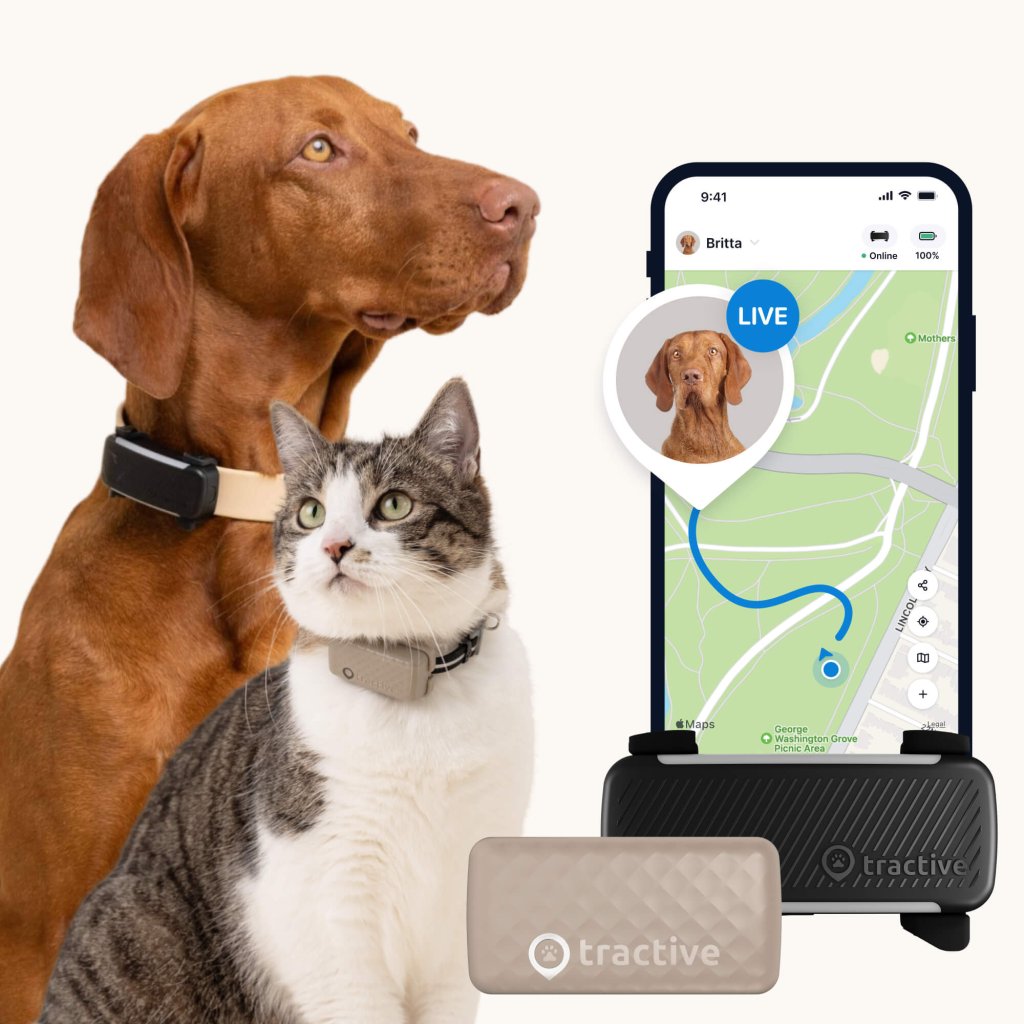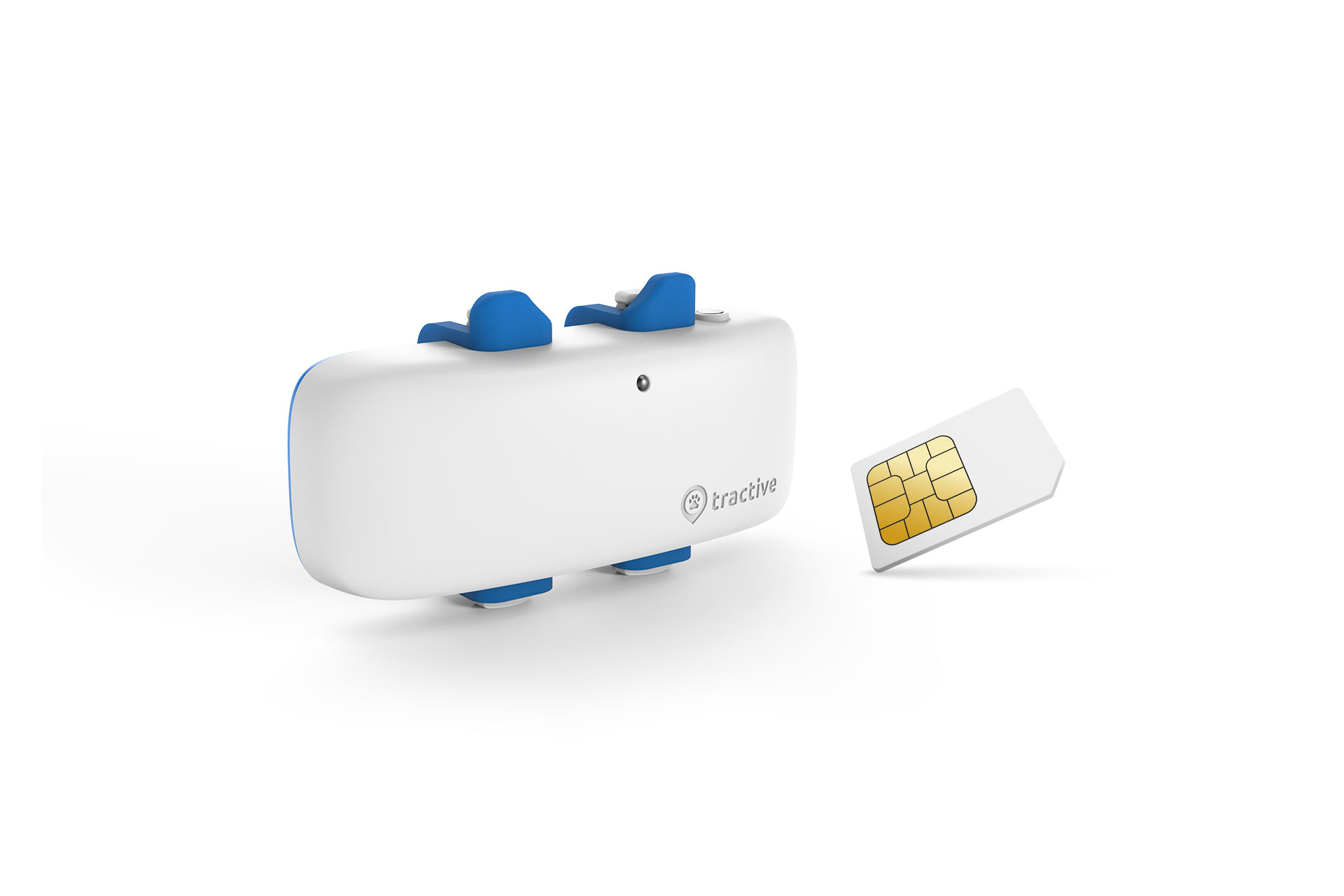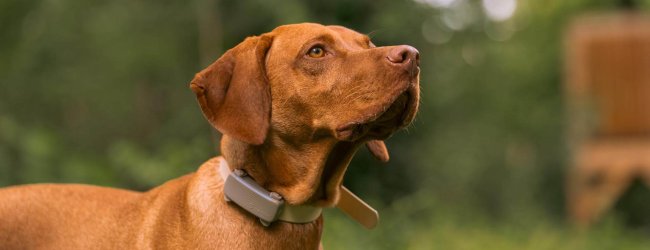What Is A Virtual Fence – And Which One’s Best For Pets?
Whether you have farmed animals or busy dogs to keep up with, here's how a virtual fence can help you get peace of mind.
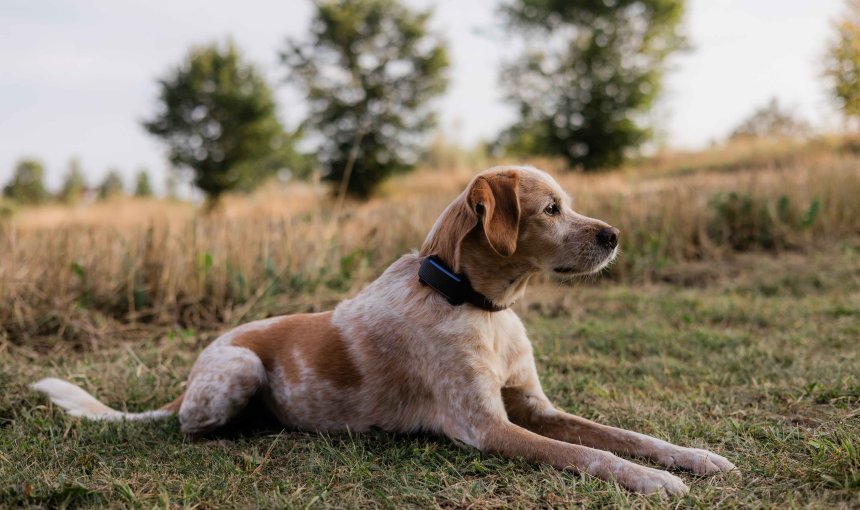
Gone are the days of having to rely on physical fences to keep your animals safe. Virtual fences come with so many benefits over traditional fencing, you’ll ask yourself why you never used one before. So, how does it work? And what are the advantages? Plus what’s the best virtual fence for dogs and cats? Let’s get into it!
Key Takeaways
Virtual fences use GPS technology to create invisible boundaries. These help keep animals within designated safe zones without the need for physical barriers.
You can easily set up, edit, or move virtual fences through an app. Meaning, they’re much more flexible and affordable than traditional physical fences.
Popular trackers for cats and dogs come with built-in virtual fence features. You can mark safe or no-go zones on a map and get escape alerts if your pet enters or exits the area.
Not all virtual fences are built alike. Some invisible fences use electric shocks to keep animals inside an area. Electric fences can have negative effects on animals and their bond with humans.

Always know your buddy is healthy & safe
Read moreWhat is a virtual fence?
A virtual fence is a non-physical, digital fence containing or fencing in animals in the real world. It’s a relatively new technology, helping pet parents and ranchers alike to control their animals without the use of physical fences.1 In other words, it’s a pretty sweet option if your dog has a habit of jumping over – or digging under – your existing outdoor dog fence.
“Virtual fences allow you to contain an animal such as a cow, cat or dog thanks to a little help of GPS and some other amazing technologies.”
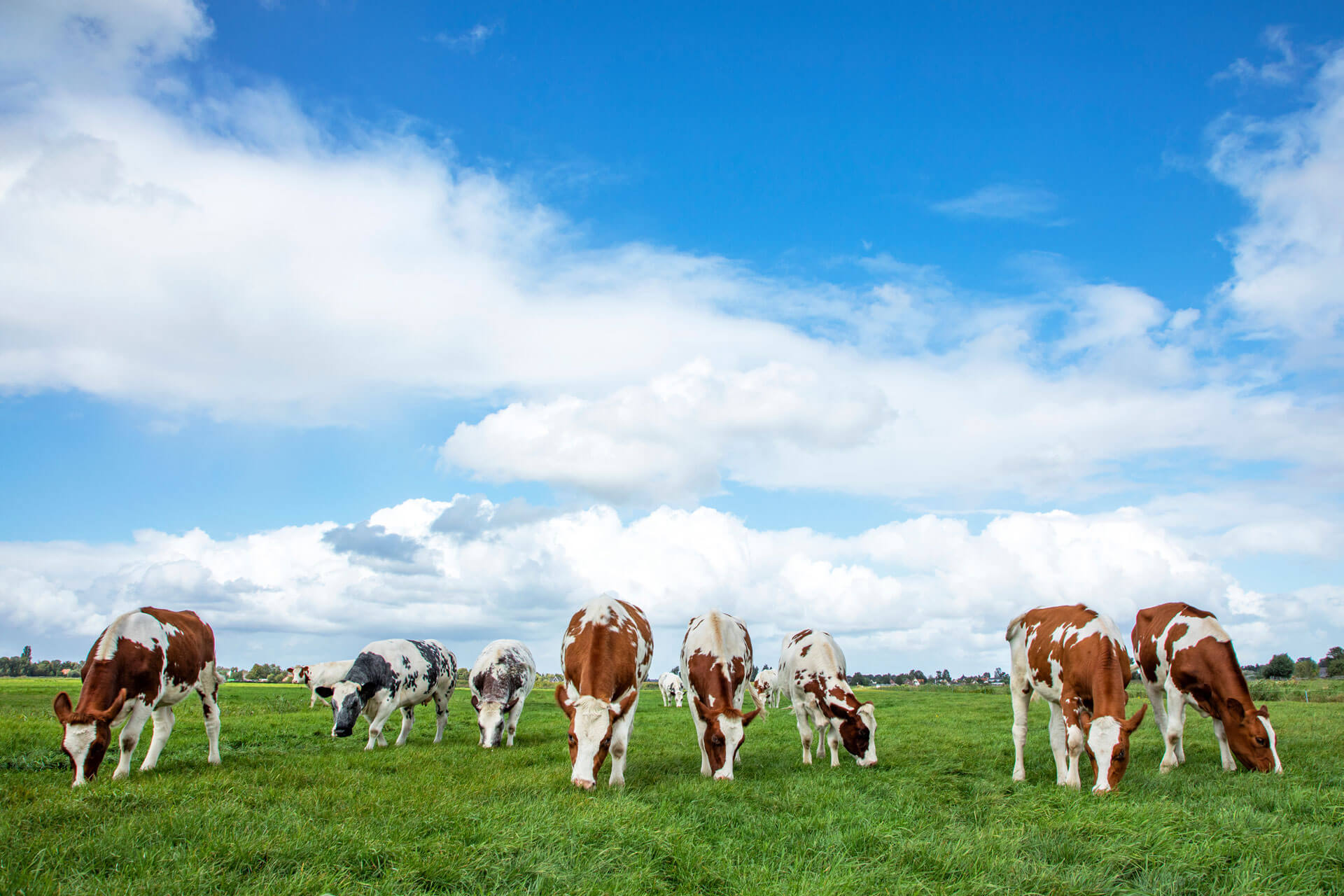
Virtual fences are commonly used in the agricultural industry for mapping and containing grazing dairy cattle and other herding livestock. However, GPS trackers with virtual fences for pet parents are also becoming increasingly common, as they provide a safe, reliable way to make sure your dog or cat stays in the yard and out of harm’s way.
How does a virtual fence work?
Virtual fences for animals tend to be easier to install and customize than traditional fences. Here’s how to set yours up:
- First, you attach a GPS tracker to the animal’s collar. It detects the animal’s location anywhere in the world using GPS satellites.
- Then, you draw a virtual fence on a map in the virtual fencing software or app.
- The GPS device communicates with the app to determine where the fence boundaries are and when the animal has crossed it.
- For Tractive GPS Virtual Fences, the system sends an escape alert to your device to signal that the animal has crossed the “fence.” Others might use a sound or electric pulse to train the animal to stay within boundaries.
For example, here’s how easy it is to set up a (100% shock-free) Virtual Fence in the Tractive GPS iOS app:
Are virtual fences for livestock different than those for pets?
With typical virtual fencing for cattle, the device on the cow emits an audio tone as it approaches the fence’s boundary. If the animal goes beyond the perimeter, an electric pulse is released; training the cattle to stay within the fenced area. This is also how typical invisible or wireless dog fences work.
⚠️ At the same time, animal rights advocates have called invisible fences that use electric shock dangerous and unethical. There’s always the chance it might cause your pet pain or worsen any reactive behavior. (Including escaping from home.)
Thankfully, nowadays popular pet trackers like Tractive offer a 100% safe, shock-free virtual fence designed specifically for the pets we love – and would never want to hurt. No electric pulse or shock administered. Just a notification to your phone if your pet leaves a safe zone or enters a no-go zone.

5 perks of virtual fencing
1. Flexible fence boundaries
Now once you’ve set up a physical fence, it’s not as easy to customize it as you’d please. Or, well, it’d mean another expensive trip to the contractors where you might spend more time discussing your property perimeters over set up. Besides, not all backyards or property perimeters work so well for a physical fence. Especially if you’re near a wooded area or have some complex HOA requirements to meet.
But since virtual fences are digital, you can easily draw the fence in nearly any shape or size you choose. For example, here’s what a custom-shaped Virtual Fence looks like in the Tractive GPS app:
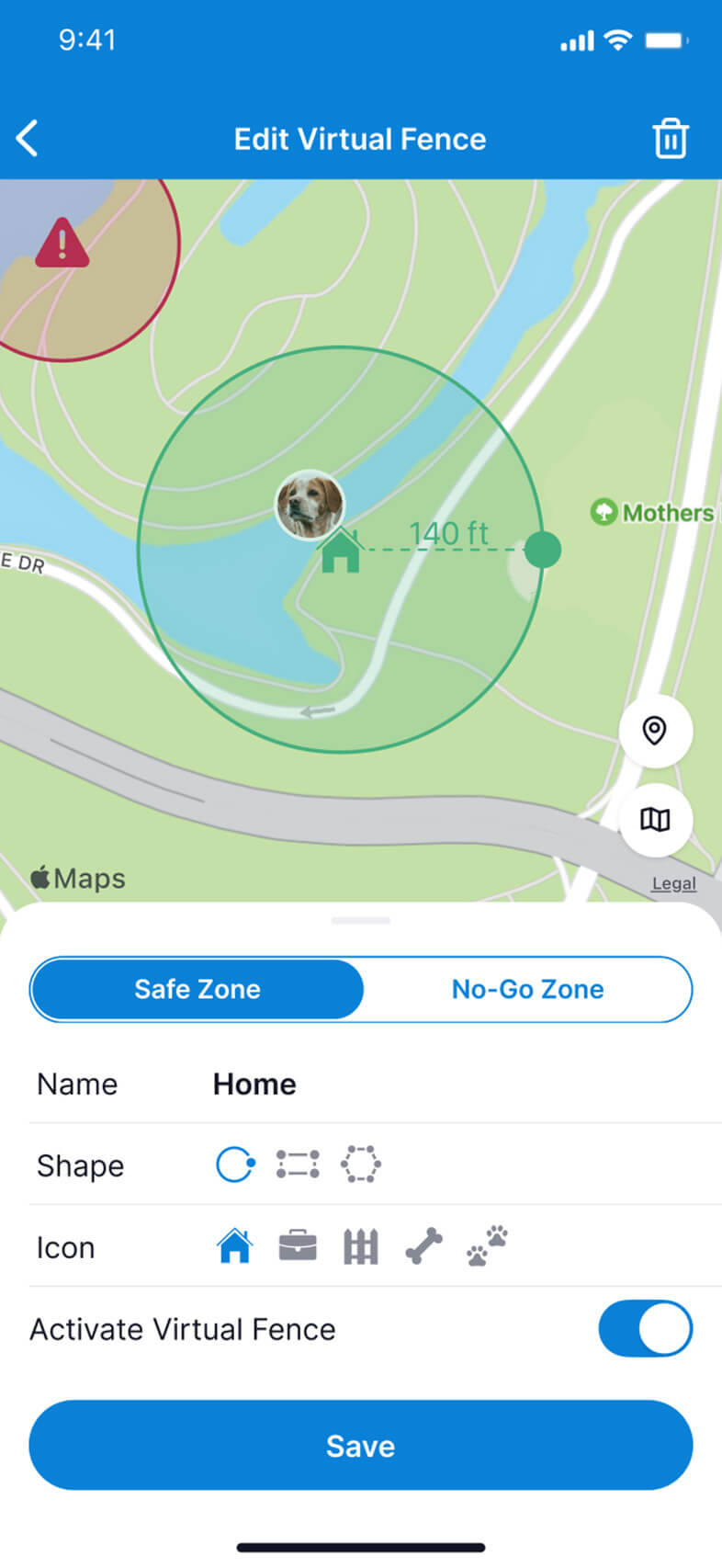
2. Portable
Speaking of flexibility, there is no limit to where the GPS tracking collar can track or where a digital perimeter can be set up, so you can move it around as you like. Plus, with Tractive’s Virtual Fence for instance, you can place the fence nearly anywhere in the world – and reposition it anytime as needed.
3. Remote control
Another great advantage of virtual fencing is their remote control capabilities. You can set up, manage and monitor the virtual fence and the animal(s) inside from anywhere, anytime on a smartphone, tablet or computer. So you can stay on top of your pet’s location, even while on vacation. Or for agricultural purposes, move a herd with just the swipe of your finger.
4. Quick, easy set-up
While it depends on the size of your property and how elaborate a job you’d like, the average physical fence may take anywhere between 1-3 days for setup.2 Besides, your contractors might take longer – even weeks – between installing posts, setting up rails or exits, or any other bits and bobs. (Meaning a longer, more cumbersome, significantly more expensive process.)
For a virtual fence? No time-consuming, professional installation required. You can set up your virtual fence in under 5 minutes – and by anyone. Just set up your tracker, add (and edit) your fence, and you’re ready to go.
5. Low cost
In the long run, most virtual fencing systems are cheaper to maintain than physical fences. The Tractive GPS for example is less than $100 + a monthly fee that’s less than your Netflix subscription. (Compared to the $3000 or so you’ll have to pay on average for a physical fence – and ongoing fees for maintenance and upkeep.)
Why the subscription? Well, it’s because of this monthly fee that your tracker connects to mobile networks around the world, helping you track your dog or cat in real-time – and also over an unlimited range.
Read more: GPS Trackers Without Subscription: What Are Your Real Options?
What’s the best virtual fence for dogs and cats?
No matter what you end up picking, we’d always recommend putting your pet’s health and safety first. Compromising their wellbeing and trust in you is never worth it. Many virtual fences use containment tactics like electrostatic shocks to scare pets into staying inside the fenced area. But without any physical fence boundary, this can be a cruel way to teach your dog or cat to stay inside the (invisible) lines.
So if you’ve found your dog digging a hole beneath your fence for the hundredth time, consider investing in a safe, shock-free virtual fence and GPS pet tracking collar. At less than $100 plus a monthly fee less than your Netflix subscription, you can track your pet and set up virtual fences anywhere in the world – 100% shock free.


